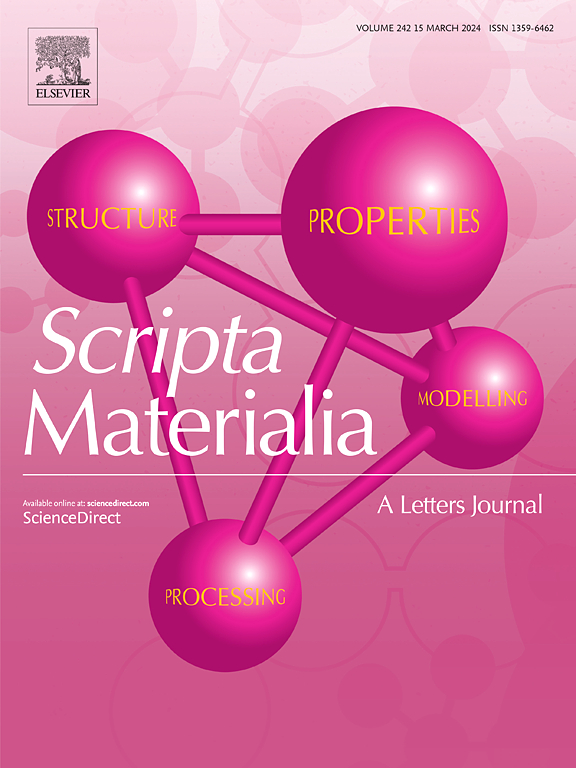钛合金中氧致界面结构选择、掺杂偏析及α/β界面的结合强度
IF 5.3
2区 材料科学
Q2 MATERIALS SCIENCE, MULTIDISCIPLINARY
引用次数: 0
摘要
采用密度泛函理论(DFT)对多相工程合金中的掺杂偏析和界面强化进行了广泛的研究,以了解结合行为和提高力学性能。然而,涉及动力学/力学不稳定结构(如β-Ti)的界面在低温下的性质仍然不清楚。采用定向限制弛豫DFT对钛合金中α/β界面的结构、偏析和强度进行了全面研究。该结果为α/β界面类型的理论计算与实验观测的不一致提供了新的见解,即空心型界面会被不可避免的氧杂质破坏。此外,许多报道的偏析行为观察结果在单掺杂情况下是合理的。硼是最有效的强化元素,并通过电子结构分析揭示了界面硬化的原因。进一步探讨了X-O共强化策略的选择,以促进钛合金的环保型发展。本文章由计算机程序翻译,如有差异,请以英文原文为准。

Oxygen-induced interfacial structure selection, dopant segregation and adhesive strength of α/β interfaces in titanium alloys
The dopant segregation and interfacial strengthening in multi-phase engineering alloys have been extensively investigated to understand bonding behavior and enhance mechanical properties by employing density functional theory (DFT). However, the properties of interface involving dynamical/mechanical unstable structures, e.g., β-Ti at low temperatures, are still obscured. We employed DFT with tailored restrictive relaxation to comprehensively investigate the structure, segregation and strength of α/β interface in titanium alloys. The results provide a new insight to the inconsistency of α/β interface types between theoretical calculations and experimental observations, i.e., the hollow-type interface would be destroyed by inevitable oxygen impurities. Moreover, many reported segregation behaviors observations are rationalized in the case of single doping. Boron is screened as the most effective strengthening element, and origin of interface hardening is revealed by electronic structure analysis. Furthermore, we explore the promising selections of X-O co-strengthening strategy to promote environment-friendly development of titanium alloys.
求助全文
通过发布文献求助,成功后即可免费获取论文全文。
去求助
来源期刊

Scripta Materialia
工程技术-材料科学:综合
CiteScore
11.40
自引率
5.00%
发文量
581
审稿时长
34 days
期刊介绍:
Scripta Materialia is a LETTERS journal of Acta Materialia, providing a forum for the rapid publication of short communications on the relationship between the structure and the properties of inorganic materials. The emphasis is on originality rather than incremental research. Short reports on the development of materials with novel or substantially improved properties are also welcomed. Emphasis is on either the functional or mechanical behavior of metals, ceramics and semiconductors at all length scales.
 求助内容:
求助内容: 应助结果提醒方式:
应助结果提醒方式:


